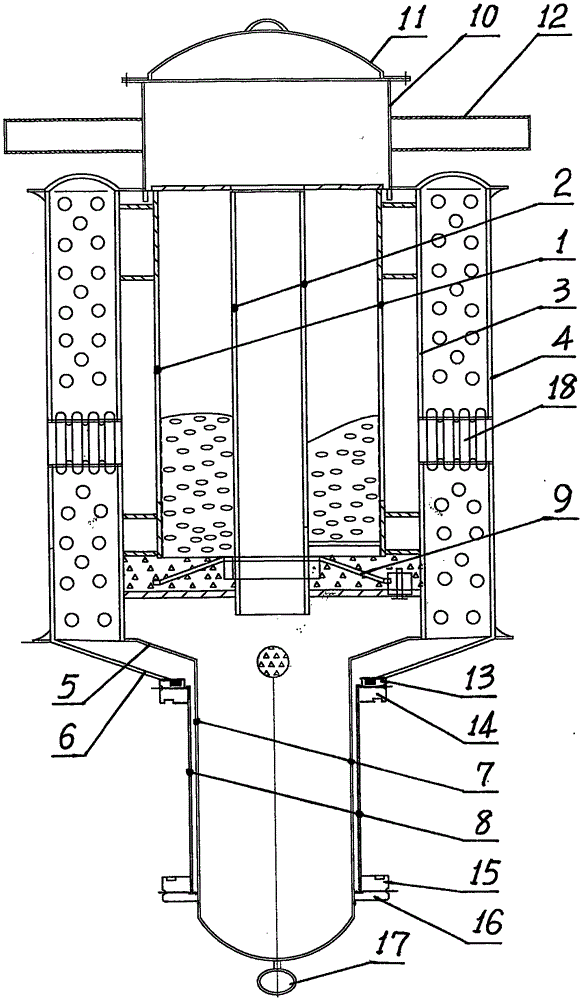Microwave carbon process magnesium smelting furnace
A technology of magnesium smelting furnace and carbon method, which is applied in the field of magnesium smelting equipment, metallurgical equipment, microwave carbon method magnesium smelting furnace, can solve the problems of low automation, high energy consumption, high cost, etc., achieve stable and reliable use effect, and be widely promoted Ease of application and operation
- Summary
- Abstract
- Description
- Claims
- Application Information
AI Technical Summary
Problems solved by technology
Method used
Image
Examples
Embodiment Construction
[0037] The present invention will be described in detail below in conjunction with the accompanying drawings. As shown in the accompanying drawings:
[0038] A microwave carbon method magnesium smelting furnace, which consists of a furnace body 1, a steam channel 2, an inner cylinder 3, an outer cylinder 4, an inner seal 5, an outer seal 6, a discharge cylinder 7, an expansion joint 8, a slag remover 9, and a vacuum chamber 10. Head 11, vacuum tube 12, A flange 13, B flange 14, C flange 15, D flange 16, slag discharge switch 17, peep hole 18;
[0039] The microwave carbon method magnesium smelting furnace, the upper head of the furnace body 1 and the upper end of the steam passage 2, the lower head of the furnace body 1 and the lower end of the steam passage 2, the furnace body 1 and the inner cylinder 3 are connected by a connecting piece, the inner cylinder 3 The upper end of the upper end of the outer cylinder 4 and the upper end of the outer cylinder 4 are composed of arc...
PUM
 Login to View More
Login to View More Abstract
Description
Claims
Application Information
 Login to View More
Login to View More - R&D
- Intellectual Property
- Life Sciences
- Materials
- Tech Scout
- Unparalleled Data Quality
- Higher Quality Content
- 60% Fewer Hallucinations
Browse by: Latest US Patents, China's latest patents, Technical Efficacy Thesaurus, Application Domain, Technology Topic, Popular Technical Reports.
© 2025 PatSnap. All rights reserved.Legal|Privacy policy|Modern Slavery Act Transparency Statement|Sitemap|About US| Contact US: help@patsnap.com

